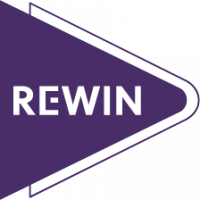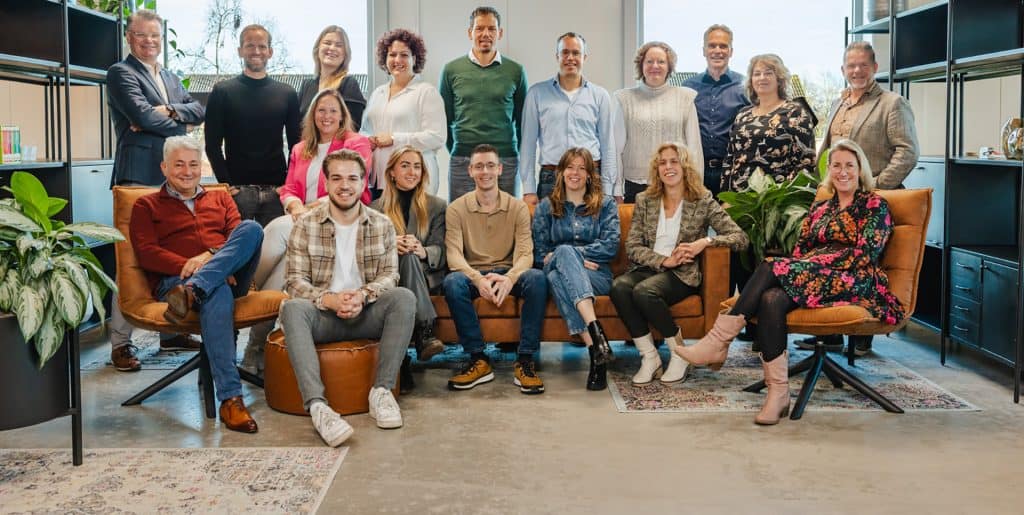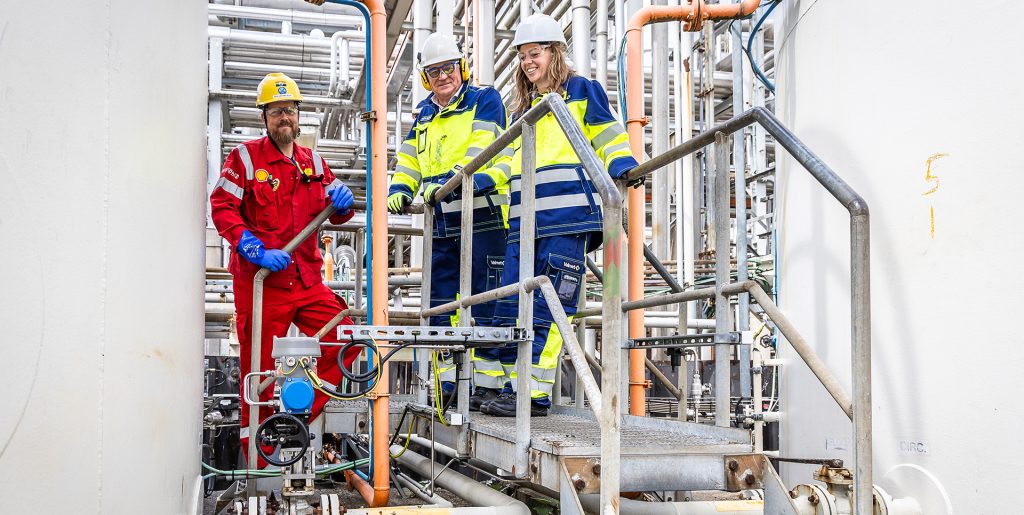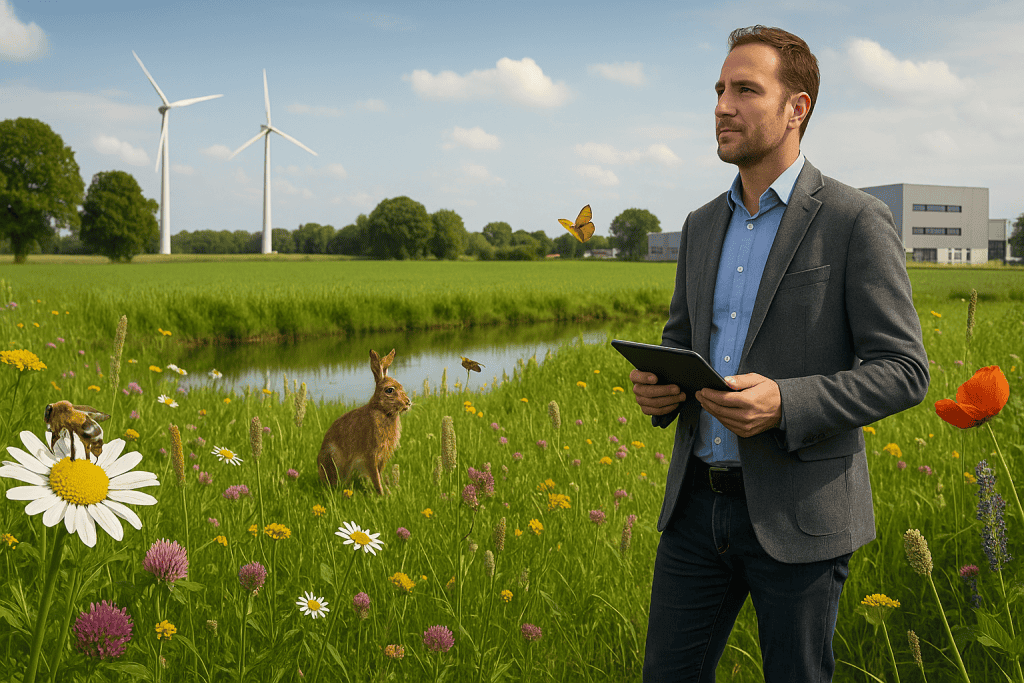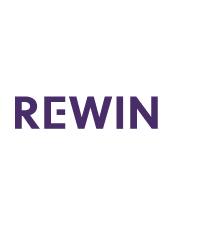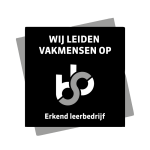The story of BioLinX – longread
BioLinX, the Horizon2020 project, ended on 30 June 2018. In this (English) longread, the project proposal, execution and outcome are described.
This project has received funding from the European Union’s Horizon2020 research and innovation programme under grant agreement No 652692
Positioning of BioLinX *)… the story of EU funded project BiolinX commenced on June 30th, 2015. At that moment the EU funded project, under the call identifier ISIB-08-b, officially started. ISIB-08-b was part of the Societal Challenge ‘Food security, sustainable agriculture and forestry, marine, maritime and inland water research, and the bioeconomy’ focusing, as Coordination & Support Action (CSA), on an ‘Innovative, Sustainable and Inclusive Bioeconomy’. Via ISIB-08, the European Commission wanted to address two distinctive challenges related to the development of the bioeconomy, being (in short)
overcoming the lack of information and public debate on the Bioeconomy andfacilitating the flow from discovery to market applications and speeding up the innovation process.“I was actually involved in the general meeting of IBIB. Then my attention was drawn by the BioLinX event in the other room. I switched because there were very interesting presentations going on there”.
(Participant in the Italian Brokerage Event)
The approach of BioLinX was to identify European funded Bioeconomy projects (7th Framework Programme and/or Horizon2020) that were within the scope of BioLinX projects, being projects that use agro and forestry materials either as feedstock, in their process or product. BioLinX applied this focus as it was our belief that this would enhance the possibility to find relevant (new) partners, to add relevant intelligence and point SMEs towards relevant markets.

After identifying the projects, BioLinX analyzed the projects based on the basics of the theory of the Technology Innovation System Analysis (TIS). Within the TIS approach actions can be classified into Key Innovation Activities: Business (related to entrepreneurial activities, market and reseources), Knowledge (related to developing and disseminating knowledge), Policy (related to rules and regulations) and Advocacy (related to lobby, influencing, non-government). The analysis would identify potential opportunities to support the analyzed project in its further development.
BioLinX foresaw that most of the FP7/H2020 projects would focus on research and/or product development and less on market development/completion of the value chain. BioLinX analyzed regions with a Smart Specialization Strategy on bioeconomy in order to identify potential market and/or value chain partners. Access to the various analyzed regions could be gained via the regional cluster organizations.
Linking and Support Actions
After analyzing projects, BioLinX would propose Linking & Support Actions. These actions could be related to
All actions should support the identified and analyzed projects in increasing TRL and/or getting to closer to market. The work was split in three waves and the Reflective Monitoring would ensure that BioLinX could dapt its approach to ensure that the results could be delivered. The remainder of this long read is written as if steps as identified above were performed in a subsequent order. In real life the three waves and activities were overlapped and influenced each other.
ExecutionThank you for inviting me to this event. It was a very well organized event with good coaches. The benefits will probably not be immediate, but I am sure the meetings and new connections will open up some doors that might help in the future. Thank you for this opportunity to be there.”
(Participant in the Swedish Finance Academy)Identifying & analyzing projects
Together with BioLinX two other projects were funded under the ISIB-08-b call, being CommBeBiz and ProBio. Both ProBio and CommBeBiz started a few months earlier than BioLinX. All projects focused on providing support to former FP7 bioeconomy projects and as such the three projects divided the 521[3] projects that received funding under the FP7-KBBE programme. In the list of 521 projects a total of 111 CSA related projects were skipped as they were not related to innovations. The remaining 410 projects were divided. Applying its focus on agro and forestry, BioLinX adopted 67 projects form the FP7-KBBE list.
Change of approach
Next, BioLinX reached out to the Coordinators of the selected projects. It turned out to be very difficult to make contact with the former Coordinators. If we could reach them, not all (or more accurate: almost no one) were inclined to coordinate, share contact details, convey the BioLinX message and so on. So, BiolinX soon realized that ‘muddling through’ via the Coordinators would not be an effective strategy in the next waves. Via its Reflective Learning, BioLinX adjusted its approach. Instead of trying to connect to the Coordinators, the BioLinX team tried to link to the project partners that were responsible for the innovation (we called them: ‘Innovation Owners’) and/or the group of partners that would be willing to continue with the innovation (we called them: ‘Coalition of the Willing’). But here also the results were marginal due to a multitude of reasons; sometimes parties were not willing to push the innovation further (not within their mission/boundaries, e.g. universities do not manufacture products), the innovation was not relevant anymore (e.g. companies changed their innovation focus) or the innovation simply was not attractive to the parties (e.g. no market). Despite the difficulties in reaching out to projects via the coordinators, BioLinX succeeded to interact with projects via its Linking and Support Programme. By inviting project partners as part of a broader audience to the Linking and Support activities, BioLinX could raise interest from these partners and interact with them. This has been the course of action for waves 2 and 3. By the end of the second wave BioLinX was in good shape to reach the targets set at the start of the project (selecting & scouting 60 bioeconomy projects & analyzing 10 regions).
After identifying and making contact with the project, the project was analyzed according to the basics of the TIS methodology. This resulted in the following aggregated overview:
Innovation Issues – Innovation Owners

(Participant in the Italian Finance Academy)The overview shows the challenges that projects have, classified according to the TIS methodology. The bigger the red boxes are, the more dominant the challenges that the projects experience in order to get to the next TRL or closer market. As often, the challenges are also intertwined e.g. the up-scaling of the technology from one TRL to the next requires not only new knowledge, but also new funding. However, the funding is not/hardly available as long as there is limited proof of customer intention, but customers can only be convinced if the innovation is available on the next level of the TRL scale.
The results of the Identifying & Analyzing projects can be found in Deliverables 2.1 and 2.3.
In order to bridge the gap between projects and markets, BioLinX analyzed 12 different regions in total. All of the regions were close to the focus (agro & forestry) of BioLinX and potential markets. The analysis in this case has also been done using the TIS methodology as well as a SWOT.

In order to further support the BioLinX brokerage and Linking & Support activities, the regional analyses have also been mapped to the Key Innovation Activities as part of the Technological Innovation System Analysis methodology. As with the projects, the specific regional input has been ‘translated’ to a higher aggregation level to enable clustering. The clustering has been performed (only) on the regional challenges, as these challenges often give a better opportunity to identify support activities by BioLinX. The following overview can be abstracted from the regional analysis. Here as well, most of the challenges are intertwined:
Key Innovation Issues – Regions

(Participant in the Swedish Brokerage Event)
The results of the Identifying & Analyzing projects can be found in Deliverables 2.2.
Linking & Support Programme
The BioLinX Linking and Support Programme consisted of 5 different activities, being:
expanding the network by providing a database of Bioeconomy professionals and organizations,adding intelligence by providing an intelligence database of articles, Patent database and project database,providing Incubation support by organizing new consortia, initiate project proposal, …adding entrepreneurial skills via trainings and webinars and finally,providing support to attract private capital and/or public funding. Each of them will be described separately.1) Expanding the network……by providing a database of boeconomy professionals and organizations.
As a basis, the legacy of the BIO-TIC project partnering database was used. In order to facilitate the BioLinX merits, some of the database fields were adapted with a new nomenclature. Each user could create a personal profile containing company and personal details as well as a description of what the person / company had to offer, ranging from doing business to being a project partner etc. Via the system one could search for new partners, companies, technologies and offerings. The database was also the starting point for ‘online partnering events’.
BioLinX organized multiple online partnering events allowing for all people registered in the database to connect.
“With the Finance Academy, BiolINx managed to create an informal setting where (would be) entrepreneurs could sit together and prsent their business plans. This resulted in eye-openers, inspiration and energy. The BioLinX team was there to provide professional input for reinforcing the business plans. But the key was that entrepreneurs were there to support eachother.”
(Participant in the Dutch Finance Academy)
The system offered an opportunity to fix dates in calendars, share documents and chat and was supported by an online meeting room. In total BioLinX, organized 9 online partnering sessions connecting over 150 persons from different regions and countries.
The set up of the database as well as the online partnering are part of Deliverables 3.1 and 3.2.
…by providing an intelligence database of articles, patent database and project database.
This part also came as a legacy of the BIO-TIC project. Based on using open access databases (among other things EU’s CORDIS, EU-patent database) for articles, patents and projects, the BioLinX intelligence platform could offer an integrated search option. By linking to these databases BioLinX made available approximately more than 18 million scientific publications and 9 million European patent databases. The intelligence database was an integral part of the partnering platform.
The set up and approach of the intelligence database has been transferred to the BIOPEN project. The intelligence database is also part of Deliverables 3.1 and 3.2.
GDPR intermezzo
From the beginning of the project, special attention was paid to how to ensure the sustainability of the technologies developed and the community that was built up in the course of the BioLinX project. An automated transfer of the contact data to another database was not possible for several reasons: 1) The taxonomy of every database in EU projects sofar is specifically customized to the requirements of the respective projects. Thus, a “simple” transfer of data from one database to another bears the risk of information getting lost or allocated into the wrong data fields, not only leading to data loss but also to data quality issues in the “receiving” project and 2) Data privacy: the data owners agreed to the use of their data in one specific project. At the time of their registration, the users could not be informed on if and where their data would be transferred. With the GDPR becoming effective on 25 May 2018, the risk of users complaining about a data transfer was seen as significant. Also, maintaining the platform beyond 25 May 2018 would have required extensive adjustments for a remaining period of only 25 days (until the end of the BioLinX project on June 30) and 3) Although regular communications have been sent out via the BioLinX partnering platform and any address changes / faulty addresses were corrected, an additional data quality check should in any case have taken place. After intense discussions, the consortium decided therefore to proceed as follows:
· All registered users of the platform were informed by e-mail that the BioLinX platform would be closed down on 25 May 2018
All registered users were invited to join the KETBIO or the BIOPEN projects. Both are EU-funded projects focusing on building communities within the European bioeconomy, enabling exchange and fostering cooperation, and allow people to register to the project. Thus, although BioLinX is not offering these services anymore, the heritage of BioLinX lives on in KETBIO and BIOPEN.
k
3) Providing incubation support……by organizing new consortia, initiating project proprosals and so on.
Through the 9 Brokerage meetings organized, a large audience of people and projects was reached. On one side, iIt enabled BioLinX to share its insights and show its offerings whilst the brokerage allowed for matchmaking and presenting of ideas / innovations from the various actors in the field of the bioeconomy. After the initial contact was established, the support and linking activities were tailored to the needs of the recipient. Based on an initial needs analysis, BioLinX participants (organizations subject to support and linking activities) were offered tailormade support, based on the BioLinX Innovation & Support Programme. In many cases, advice on available public funding opportunities was one of the main needs expressed by the BioLinX participants and their consortia/networks (which was in line with BioLinX findings on the projects challenges). This support was individually provided to the BioLinX participants, often in combination with other types of support such as incubation (project development) and/or linking or as part of the Finance Academy. In addition to the individual support provided, the BioLinX partners also tried to reach a broader audience through providing funding advice during webinars and event presentations.
Support provided
The incubation support was often provided in a number of different ways and forms, and frequently in conjunction with incubation support and/or linking:
(Participant in the Swedish Brokerage Event)4) Adding entrepreneurial skills…
…via trainings and webinars.
The entrepreneurial skills trainings were often given in conjunction with the support to SMEs in attracting private capital (Finance Academy, see next support activitiy. Next to the trainings during the Finance Academy (Bergen op Zoom, Gothenburg, Milan), also two webinars were used to increase entrepreneurial skills among SMEs . During all the Finance Academies, specific attention was paid to Investment Pitching (and feedback). BioLinX ascertained that most SMEs (especially those with a more technical background) have great difficulty in pitching their company, idea and investment needs in only a few minutes time. During each of the Investment Pitch trainings a trainer was available to explain how pitching works and what the ‘audience’ (of financials) wants to hear. Next, each participating company could present its own case, and received feedback and advice from various external experts (financials and industrials). These trainings were very well received by the participants. After the training, a social gettogether followed and during the evening (and sometimes night) the SMEs adjusted/upgraded their presentation in order to present the revised version to the experts the next day, during the Finance Academy. Other trainings were about Intellectual Property, Life Cycle Analysis & eco-design.
Next to the Finance Academies, two webinars were hosted; one about ‘Life Cycle Analysis’ and one on ‘Introduction to creating a high growth biobased business company’. During the webinars experts shared their knowledge and insights with the audience.

“The IP information was really an eye-opener. It showed me the diretion to a new way of doing business: based on royalties. I had never realized that my trademark is such an important asset!”
(Participant in the Dutch Finance Academy)
5) Providing support to attract private capital and/or public funding…
… via the Finance Academies (Bergen op Zoom, Gothenburg and Milan) and as part of the incubation services (see ‘providing incubation support <<link>>).
The Finance Academies were aimed at attracting private capital. After the entrepreneurial training (see ‘entrepreneurial skills’, bullet 4 the SMEs could consult with the experts during a social event and adjust (and in some cases transform) their company presentations (often overnight) to be in good shape for the Finance Academy events. During the Finance Academy the SMEs again had the opportunity of presenting their business, innovation and investment opportunity, and the panel of experts reflected on the presentations. In total, 48 SMEs participated in the Finance Academies. Also outside of the BioLinX ‘arena’ some of the participating SMEs were invited to join separate events like the European Venture Summits of BioLinX consortium partner TechTour. After each Finance Academy, winners were chosen by the experts panel.
Information on Public Funding was often shared via the brokerage events and/or during the incubation support.

Reflective monitoring
By applying Reflective Monitoring, BioLinX was able to collect lessons learnt and, as a project consortium, be adaptive to increased knowledge, insights and awareness gathered during the project period, solving recurring barriers and shifting circumstances. One of the most important issues was to overcome the difficulties of conveying the (free of charge) BioLinX services. With (among other things) the insights from the Reflective Monitoring and the Communications team, the ‘Success / Support stories’ were identified, collected and shared. These success stories contributed to conveying the message of BioLinX, made clear what BioLinX had to offer and indicated the possible outcome of participating in the project. Furthermore, the Reflective Monitoring allowed BioLinX to interact with its international BioEconomy Expert Panel and receive feedback from them via interviews and questionnaires. Finally, as part of the Reflective Monitoring a Bioeconomy Region Shared Innovation Game (a board game) was developed.
Post project
On June 30th, 2018 the BioLinX project ended. The BiolinX project leaves a couple of tangible assets, being the ‘Policy Recommendations BioLinX’, ‘Legacy Document’ and this longread.
Next, all the public deliverables are listed below.
The ‘Policy Recommendations BioLinX’ reveal in an easily accessible and understandable way the learnings of BioLinX. These learnings are translated into ‘active’ policy recommendations.
The ‘Legacy Document’ introduces BioLinX in a nutshell and provides the regional analysis.
This longread merely has the purpose of giving a brief and simplified overview of / introduction to the BioLinX project and is not intended to replace the formal reporting to the European Commission.
Should you have any questions, please contact the BioLinX project coordinator: Dennis van der Pas.
“Thank you for giving me the opportunity to participate, I took away the necessary information for my company in terms of marketing and contacts. I had the opportunity to meet, illustrate our innovations and establish contacts with foreign investors, and even a possible partnership with one of the companies had merit, so I am very happy.”
(Participant in the Italian Finance Academy)
k
